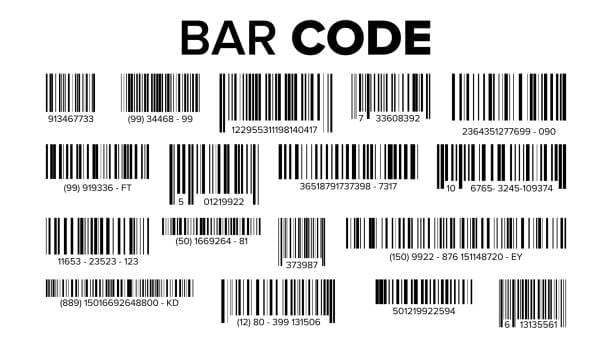
A barcode is a machine-readable representation of data in the form of parallel lines (1D) or geometric patterns (2D) that can be scanned to retrieve information quickly. Barcodes are widely used in retail, logistics, inventory management, and more.
Types of Barcodes
1. 1D (Linear) Barcodes
- UPC (Universal Product Code)
- Used in retail (e.g., grocery stores in the U.S. and Canada).
- EAN (European Article Number)
- Similar to UPC but used globally (EAN-13 for standard products).
- Code 39
- Alphanumeric, used in logistics and automotive industries.
- Code 128
- High-density, used in shipping and packaging.
2. 2D Barcodes
- QR Code (Quick Response Code)
- Stores more data (URLs, contact info, payments).
- Scanned by smartphones.
- Example: https://upload.wikimedia.org/wikipedia/commons/thumb/d/d0/QR_code_for_mobile_English_Wikipedia.svg/1200px-QR_code_for_mobile_English_Wikipedia.svg.png
- Data Matrix
- Small, used for labeling small items (electronics, medical devices).
- PDF417
- Stacked barcode, used for IDs (driver’s licenses, boarding passes).
How Barcodes Work
- Encoding Data: Numbers/letters are converted into bars/spaces (1D) or dots (2D).
- Scanning: A barcode reader (laser scanner or camera) reads the pattern.
- Decoding: The scanner translates the pattern into digital data.
- Database Lookup: The system matches the code with stored info (e.g., price, product details).
Applications of Barcodes
- Retail: Pricing, inventory tracking.
- Logistics: Package tracking (UPS, FedEx).
- Healthcare: Patient IDs, medication tracking.
- Ticketing: Event tickets, boarding passes.
- Marketing: QR codes for ads, promotions.
Generating & Printing Barcodes
- Online Generators: Websites like Barcode Generator.
- Software: Zint, Bartender, or Excel plugins.
- Printers: Thermal label printers (Zebra, Dymo).
